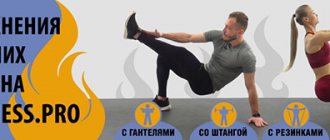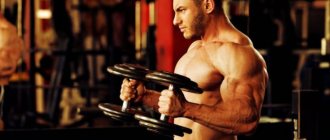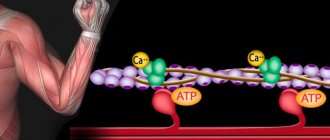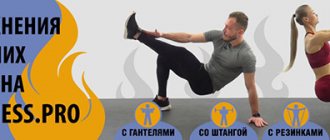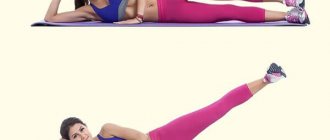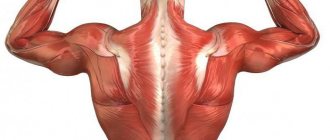The plateau effect in fitness
In the first months of regular physical activity, colossal changes occur in the body: weight decreases, fat deposits decrease, beautiful muscle contours appear, the body becomes elastic and toned. But gradually the effect fades away and the changes become less pronounced. A person increasingly experiences a feeling of fatigue, the quality of sleep deteriorates, and the thought of physical exercise causes rejection and irritation. All these symptoms indicate that a person has reached a “plateau” - that state of the body when it stops responding to stimuli, in particular, physical activity. Lack of response indicates that the body has stopped changing in response to training and has successfully adapted to new conditions.
Human adaptation to new conditions is one of the most important mechanisms ensuring his survival in the external environment and is carried out at the cellular level. As the cell adapts, it changes and strives for the most perfect form, in which it can continue its life activity without significant energy consumption. Fitness is characterized by the same processes: the body adapts to the load, taking the most comfortable state for itself, and stops changing as soon as the desired shape is achieved. Natural irritants for the body under these conditions will be special physical exercises, or rather changes in their nature, degree of intensity and time of execution.
The first classes of beginners create severe stress for the human nervous system and the brain, trying to minimize the consequences, mobilizes all its forces to restore a normal state. If the training is one-time and does not continue, then the human body returns to its original state and no changes occur. But when fitness classes become a habitual way of life and are carried out at least 3 times a week, the body receives a signal about the need to adapt to new conditions and begins to change in accordance with the load exerted. With a regular increase in heart rate, the force of blood ejection increases and the heart rate decreases; with rapid breathing - the volume of the lungs expands; with microdamage to muscle tissue, not only the cracks heal, but also the growth of a new layer of cells, which increases the size of the muscles. The main task of the body is to quickly change and adapt to new conditions with a maximum reduction in losses. Gradually, fitness becomes a habitual irritant, the body stops responding to it and changes stop.
https://youtu.be/63BW8bTWZjg
Simplify
There are too many interesting exercises and programs on the Internet. Of course, it is good to have access to information, but it can lead you astray. Here are a couple of the most important tips for effective training:
- Choose good exercises (that suit you personally and lead to your goal).
- Get better at them by gradually increasing the working weight.
The more difficult your training, the further away you are from these two components. Simplify and you will achieve more. Set aside specialized programs for those times when nothing else helps.
Principles of performing exercises to shift weight from a “dead point”
To overcome the plateau effect, you need to make some changes to your training process:
- Perform exercises using cheating.
The English translation explains this word as deception. The main task of the athlete is the need to outwit his body. To do this, when performing movements, additional muscles are included in the work, which take part of the load from the target muscle. For example, when pressing a barbell at the end point of the amplitude, you help yourself by pushing your legs. During aerobic exercise, such as running, you can change the position of your feet and place your feet at a slight angle, increasing the load on the back of the thigh. These simple techniques will help increase the body's energy expenditure and burn more calories.
- Changing the program or varying options for performing elements.
To begin with, it is not necessary to change the entire program, it is enough just to adjust and replace individual exercises. For example, instead of classic lunges, choose diagonal lunges, or spread your legs wider in a plie: in this case, the physical load on the muscles will increase.
- Changing the speed of exercises.
For strength training, a slow pace is more preferable, as it allows you to focus on the target muscles and work them out efficiently. But to shift the weight, you can use alternating speeds and perform the set first at a slow and then at a faster pace. For aerobic training, an interval program will also be more effective: for example, when jogging, first run for 10 seconds at maximum speed, then 20 seconds at a calm pace. Alternate periods for 20 minutes. This approach will burn much more calories and force the body to look for new ways to adapt.
- Changing the number of repetitions in the approach.
Most athletes adhere to standard exercise repetition patterns: 6-8 times of basic exercises and 10-15 times of isolation exercises. But in the case of a “plateau”, it is important to use non-standard approaches; physical activity should constantly change. One exercise can be done first with a large weight, and then, using less weight, perform it in a multi-repetition style.
These techniques will help move the weight off the “dead point” and force the body to look for new resources and opportunities for change.
5. Roll back
If you get stuck, reduce the weight by 10-20% and go through the progression again. A slightly reduced load will help you hone your technique and return to increased results, leading to a new record. Many athletes are intimidated by the thought of taking a couple of weights off the bar, but the “one step back, two steps forward” strategy is time-tested and very effective.
The progressive overload method itself works well, and when you add simple cycling to it, the results can grow even longer. What’s good is that you can’t roll back in all movements, but only in those where there is stagnation.
How to avoid the plateau effect with regular physical activity
You can stimulate the process of weight loss using the methods described above, but it is best to avoid such situations. To do this, it is recommended to adhere to the following tips when doing fitness:
- You should not drive yourself to the point of emotional dependence by becoming an ardent supporter of sports. This mindset can cause symptoms of overtraining and become extremely stressful for the body. Sports should be a reasonable addition to everyday life and just a means to preserve youth, health and beauty.
- To track your results, it is recommended to keep a training diary and write down all the changes that occur to your body. This will help prevent stagnation in results and correctly dose the load.
- Classes should be systematic: fitness training from time to time will do more harm than good.
- When creating a program, it is necessary to use both aerobic and strength training. This will help burn excess fat and strengthen muscles.
- The training load also needs to be alternated: on one day they do cardio at a calm pace, on the other they do a short intense workout.
Constant variety in training and a clear sequence of actions will ensure a gradual and smooth change in the body, without unnecessary stress and harm to the body.
Check the database
Any sports goal can only be achieved if the basic rules are followed. Before you start looking for complex solutions, answer these simple questions honestly:
- Do I have a clearly defined goal?
- Is my training leading to this goal or am I distracted by interesting but unhelpful exercises and methods?
- Are my expectations too high? (Am I really planning on gaining 20kg of muscle in a month?)
- Am I doing the hard, “big” exercises that get results?
- Am I progressing with these exercises by increasing the weight I use?
- Do I keep a training diary?
- Am I missing workouts?
- Am I following through with the program or am I changing them too often?
- Do I regularly evaluate my progress in an objective manner (in the case of hypertrophy, by measurements)?
Also be sure to check everything you do outside the gym:
- Is my diet helping me achieve my goal? Do I keep a food diary?
- Do the sports supplements I take help me?
- Am I getting enough sleep?
- Am I giving my muscles enough rest? (Does two hours of basketball after strength training affect them?)
- Am I managing stress and doing everything I can to eliminate unnecessary worries from my life?
Yes, you've heard it all a hundred times. The only question is, do you do this all the time? Go through the list and then tackle all the “no” answers. Most people embark on exotic experiments, forgetting about the basics: targeted training, proper nutrition, high-quality recovery.
Change all
Develop your “principle of priority training”, as the famous Francis Benfatto does. If there is a lack of progress, the first step is to try reducing the number of visits to the gym to one per week, the duration of the workout and the number of exercises.
And further. Many will categorically disagree with the following proposal, but practice undeniably demonstrates the usefulness of long rest. For example, every six to eight weeks - a week of rest. Among the advantages we can highlight the following:
- rest and muscle recovery;
- restoration of the central nervous system;
- health of joint and ligament tissues;
- confidence;
- new motivation.
Read more: Swimming for weight loss - DailyFit
https://youtu.be/q8Z7qP-cBzE
After which the full load method works, with each repetition (from six to 12) increasing the weight to grow muscles. And with its new addition, it would be nice to perform two to four sets of five to six repetitions.
The drop set technique correlates recovery moments, just like a series of supersets. Stepped sets spare a tired muscle, consistently reducing the load on it.
Take a break from your main goal for a while
Sometimes taking a distraction from your goal helps you get closer to it. Temporarily deal with related things, and then return to the main thing. When gaining weight, try other tasks:
1) Strength. The stronger you are, the heavier the working weights in all exercises. The most massive bodybuilders often have good strength indicators.
2) Strength endurance or training of metabolic systems. Not only will you remove some fat from your muscles, but you will also improve insulin sensitivity and subsequent anabolic processes.
The trick is to not overdo the side gains and lose muscle (you may want to include a little maintenance). Then go back to full weight training and get even bigger.

